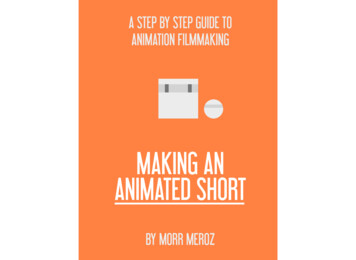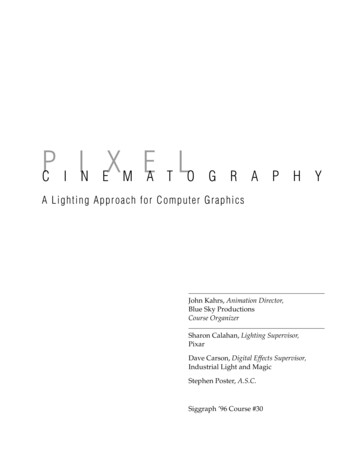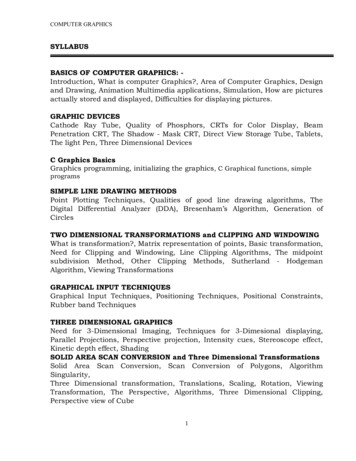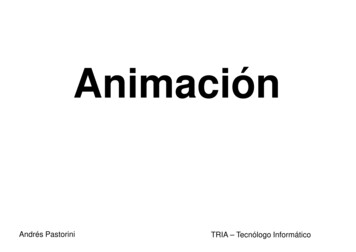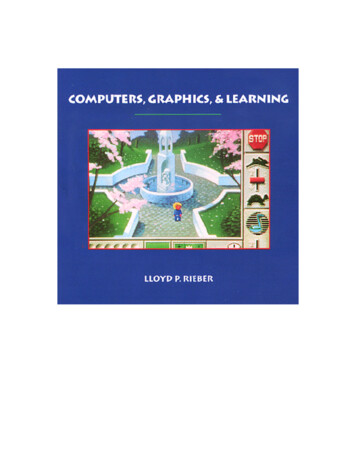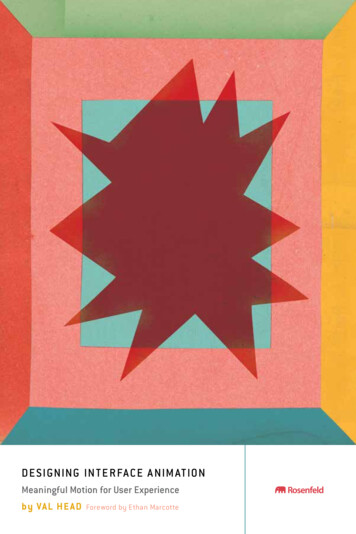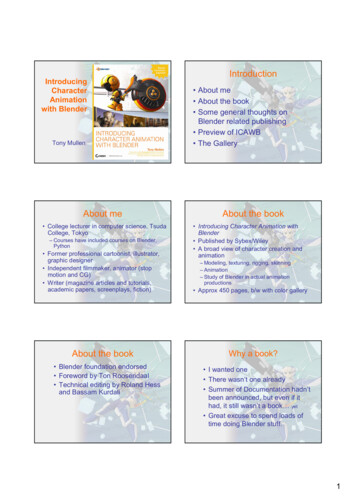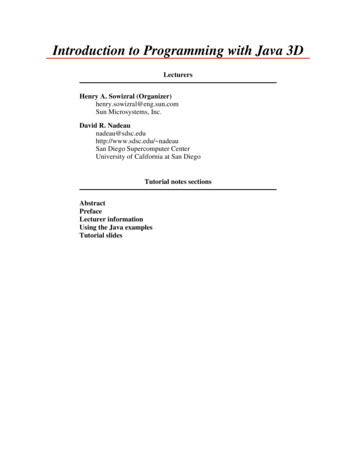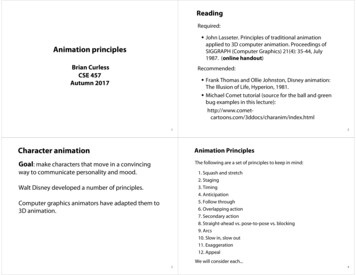
Transcription
ReadingRequired: John Lasseter. Principles of traditional animationapplied to 3D computer animation. Proceedings ofSIGGRAPH (Computer Graphics) 21(4): 35-44, July1987. (online handout)Animation principlesBrian CurlessCSE 457Autumn 2017Recommended: Frank Thomas and Ollie Johnston, Disney animation:The Illusion of Life, Hyperion, 1981. Michael Comet tutorial (source for the ball and greenbug examples in this nim/index.html12Character animationAnimation PrinciplesGoal: make characters that move in a convincingThe following are a set of principles to keep in mind:way to communicate personality and mood.1. Squash and stretch2. Staging3. Timing4. Anticipation5. Follow through6. Overlapping action7. Secondary action8. Straight-ahead vs. pose-to-pose vs. blocking9. Arcs10. Slow in, slow out11. Exaggeration12. AppealWalt Disney developed a number of principles.Computer graphics animators have adapted them to3D animation.We will consider each.34
Squash and stretch (cont’d)Squash and stretchSquash: flatten an object or character by pressure or by its ownpower.Stretch: used to increase the sense of speed and emphasize thesquash by contrast.Note: keep volume constant![Lasseter]5Squash and stretch (cont’d)[Thomas and Johnston][Lasseter]6Squash and stretch (cont’d)7[Thomas and Johnston]8
Squash and stretch (cont’d)StagingPresent the idea so it is unmistakably clear.Audience can only see one thing at a time.Useful guide: stage actions in silhouette.In dialogue, characters face 3/4 towards the camera, not right ateach other.9Timing10Timing (cont’d)An action generally consists of anticipation, the action, andthe reaction. Don't dwell too long on any of these.Timing also reflects the weight of an object: light objects move quickly heavier objects move more slowlyTiming can completely change the meaning of an action.11[Thomas and Johnston]12
Timing (cont’d)AnticipationAn action has three parts: anticipation, action, reaction.Anatomical motivation: a muscle must extend before it can contract.Prepares audience for action so they know what to expect.Directs audience's attention.Animation by Ken Perlin.13Anticipation (cont’d)14Follow throughActions seldom come to an abrupt stop.Amount of anticipation (combined with timing) can affectperception of speed or weight.Physical motivation: inertia1516
Overlapping actionFollow through (cont’d)One part intiates (“leads”) the move. Others follow in turn.Hip leads legs, but eyes often lead the head.Loose parts move slower and drag behind (sometimes called“secondary motion”).Overlaps can apply to intentions. Example: settling into the house atnight. Close the doorLock the doorTake off the coatetc.Each action doesn't come to a complete finish before the next starts.1718Straight-ahead vs.pose-to-pose vs. blockingSecondary actionAn action that emphasizes the main point but issecondary to it.Straight ahead: proceed from frame to frame withoutplanning where you want to be in ten frames. Can be wild,spontaneous.Pose-to-pose: Define keyframes and "inbetweens".Blocking: Computer graphics animators adaptation Start key-framing at the top of the hierarchy. Refine level by level. Keyframes for different parts need not happen at thesame time.1920
Straight-ahead vs.pose-to-pose vs. blocking (cont’d)Screenshot from MayaArcsAvoid straight lines since most things in nature move in arcs.2122Slow in and slow outExaggerationAn extreme pose can be emphasized by slowing down as you get toit (and as you leave it).Get to the heart of the idea and emphasize it so theaudience can see it.In practice, many things do not move abruptly but start and stopgradually.2324
AppealAppeal (cont’d)The character must interest the viewer.Note: avoid perfect symmetries.It doesn't have to be cute and cuddly. Design, simplicity, behavior allaffect appeal.Example: Luxo, Jr. is made to appear childlike.[Lasseter][Thomas and Johnston]25Appeal (cont’d)Animation ArtifactNote: avoid perfect symmetries.Guidelines26 Aim for 30 - 60 seconds shorter is usually better. Don’t make ananimation that feels like “slow motion”! Try to use some of the principles from this lecture. See project page for pointer to video creation. Audio is permitted, though optional.Turn in One artifact per group Submit representative image, in addition to final video Due Thursday, December 7 at 9am sharp.Voting Non-anonymous, in-class voting on Thursday, December 7. Extra, extra credit and a special grand prize to be awarded!2728
Animation ArtifactAnimation productionNon-anonymous, in-class voting on Thursday, December 7.More broadly animation is about making “movies”and encompasses:Prizes! Runners-up: mystery prizes Story Art design Modeling Cinematography Motion Rendering 2nd place: “Cars 3” Blu-ray 1st place: “Cars 3” Blu-ray extra special mystery prize!2930
Autumn 2017 2 Reading Required: John Lasseter. Principles of traditional animation applied to 3D computer animation. Proceedings of SIGGRAPH (Computer Graphics) 21(4): 35-44, July 1987. (online handout) Recommended: Frank Thomas and Ollie Johnston, Disney animation: The Illusion of Life, Hyperion, 1981.
